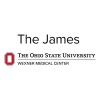
Advanced Oxidation Protein Product and Monocyte Chemoattractant Protein-1 in Periodontal Disease...
InflammationPeriodontal DiseaseThis study investigates the levels of advanced oxidation protein product and monocyte chemoattractant protein-1 in gingival crevicular fluid in periodontal disease and health. 25 participants with chronic periodontitis, 25 participants with gingivitis and 25 periodontally healthy subjects are included into this study. In each participant, four sites are identified for gingival crevicular fluid samples.

Markers of Inflammation and Lung Recovery in ECMO Patients for PPHN
Persistent Pulmonary Hypertension of the NewbornRespiratory failure in newborns is common and has high rates of death. Where conventional intensive care strategies have failed, newborn children are referred to treatment with Extra- Corporeal Membrane Oxygenation (ECMO). This involves connecting children via large bore cannulas placed in their heart and major blood vessels to an artificial lung that adds oxygen to their blood and removes waste gases (carbon dioxide). Although this treatment saves lives, it still has some limitations. In particular, severe complications like bleeding, or damage to the kidneys can occur. These complications can lead to death in some cases and long-term disability in others. Based on ongoing research in adults and children undergoing cardiac surgery the investigators have identified a new process that may underlie some of the complications observed in ECMO. The investigators have noted that when transfused blood is infused in an ECMO circuit, this results in the accelerated release of substances from the donor cells that cause organ damage; at least in adults. There are treatments that can reverse this process. Before the investigators explore whether these treatments should be used in newborn children on ECMO, the investigators must first demonstrate that they can measure the complex inflammatory processes that occur in these critically ill children. The investigators therefore propose to conduct a feasibility study to identify the practical issues and challenges that would need to be overcome in order to perform a successful trial in this high-risk population.

Association of Constipation Inflammatory and Microbial Translocation Markers
ConstipationInflammationGrowing evidences showed that patients with chronic constipation accompanied with intestinal dysbiosis. Gut dysbiosis is a harbinger of chronic inflammation, yet the underlying basis is unclear. Plasma level of microbial translocation is a marker of mucosal permeability. Increased mucosal permeability ignites elevated microbial translocation and is a source of systemic immune activation in CKD patients. The passage of microbial components from the gastrointestinal tract into the systemic circulation may be an important contributor to the chronic inflammatory process and subsequent atherosclerosis development. We plan to determine the association constipation with biomarkers of inflammation such monocyte activation and associated cytokines as well as markers of microbial translocation including endotoxin and its antibodies, intestinal barrier proteins of 200 hemodialysis patients.

A Community Study of the Risk for Obstructive Sleep Apnea and Respiratory Inflammation in an Adult...
Obstructive Sleep ApneaInflammation2 moreWe aimed to investigate the relationship between obstructive sleep apnea (OSA) risk and respiratory inflammation evaluated by the exhaled breath condensate (EBC)interleukin-6 IL-6 and plasma SP-D, based on the Berlin questionnaire (BQ) screening values in an adult, urban community in Beijing, China. Volunteers aged >40 years were recruited from the Shichahai community of central Beijing. Their general information and disease history were recorded. OSA risk was assessed using the BQ. IL-6 in EBC and plasma SP-D were detected by enzyme-linked immunoassay (ELISA)through specimens collected on fasting. The differences in IL-6 and SP-D contents between high-risk and low-risk groups for OSA were compared, and the factors affecting their contents were analyzed.

Serum Pro-Diabetes Inflammation Biomarkers in Patients With Apical Periodontitis.
Apical PeriodontitisInsulin Resistance2 moreInflammation is a common factor of chronic periodontitis and diabetes. However, to date, there is no scientific evidence supporting a causal effect of the inflammation created by apical periodontitis on the onset of insulin resistance and on metabolic derangement in the condition of pre-diabetes or diabetes. A case control study has been designed in order to evaluate serum levels of pro-diabetes inflammation factors in a sample of healthy patients between 25 and 55 years of age, with or without apical periodontitis,before endodontic treatment and at 6 and 12 months post-treatment. The aim of the study is to evaluate any relation between the presence of chronic endodontic lesions and pro-diabetes inflammation factors that can promote the onset of insulin resistance, and whether endodontic treatment can reduce these factors, thus preventing a pro-diabetes status.

Inflammatory Markers in Natural Orifice Hysterectomies
Gynecologic DiseaseInflammationThe authors aimed to detect inflammatory marker changes in two natural orifice hysterectomies: single-port laparoscopic hysterectomy (SLH) and vaginal hysterectomy (VH). Between 2018 and 2019, data obtained from patients in the SLH and VH groups were reviewed retrospectively. The preoperative and postoperative hematocrit (HCT), hemoglobin (HB), white blood cell (WBC), platelet (PLR), and neutrophil-lymphocyte (NLR) ratios and values were compared as well as the demographic characteristics of the patients.

Fast Food, Fatigue, and Inflammation
Breast CancerThis double-blind, randomized crossover trial assessed inflammation and fatigue following a fast-food-type meal (saturated fat) compared to a healthier meal (monounsaturated fat) in breast cancer survivors and benign controls (women who had an initial abnormal test for breast cancer).

Effect of Different Obturation Techniques on Postoperative Pain
PainPostoperative2 moreThis study evaluated the postoperative pain after the endodontic treatment by using three different obturation techniques. ( Cold lateral condensation (CLC), thermoplasticized solid-core carrier method (GuttaCore) and cold free-flow compation tecnique ( GuttaFlow2))

Neuroinflammation in Chronic Systemic Symptoms (CSS)
CancerCancer Head Neck4 moreThe purpose of the present research protocol is to investigate and identify translocator protein 18kDa, MRI DTI, and EEG/ERPs, markers of Chronic Systemic Symptoms (CSS).

Oxytocin for Oxidative Stress and Inflammation
Oxidative StressInflammationNaval Special Warfare (NSW) operators are exposed to a variety of extreme environmental conditions and intense physical demands. In addition to breathing high pressure gases at depth, prolonged cold water immersion and inadequate recovery from sustained physical exertion negatively impact individual and team performance. Biotechnologies that could mitigate the effects of cold as well as support physical recovery represent a significant unmet need for the NSW operational community. Oxytocin (OT) has a wide range of actions both locally in the brain and peripherally in the body including skeletal muscle. These peripheral effects can be mediated by classic ligand-receptor activation given the abundant expression of the oxytocin receptor in peripheral tissues, along with local expression of OT in peripheral tissues where it is likely to act in an autocrine manner. Exogenous OT via intranasal administration is FDA Investigational New Drug (IND)-approved and has been demonstrated as an easy and safe method to increase circulating OT concentrations that may augment actions on peripheral tissues. Due to the pleiotropic effects of OT on whole body metabolism, thermogenesis, stress responses, pain, mood, inflammation, appetite, glycemic control, skeletal homeostasis, and skeletal muscle repair and regeneration, there is increasing interest in the administration of exogenous OT for benefits to human health, performance and resilience. However, the biological mechanisms by which OT exerts tissue-specific effects (e.g., skeletal muscle) remain poorly understood, particularly in humans. This project is designed to significantly advance this understanding while testing the central hypothesis that intranasally administered OT attenuates systemic and skeletal muscle oxidative stress and inflammation induced by the combined stressor of resistance swim exercise and hyperoxia.
